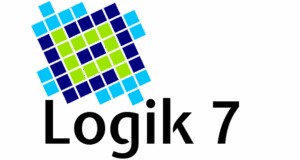IT for the World: Transforming Industries and Improving Lives
In today’s fast-paced world, Information Technology (IT) is more than just a tool—it’s the backbone of modern society. From powering communication systems to revolutionizing industries, IT has become a fundamental force that is shaping our world in ways we never imagined a few decades ago. Whether you’re working remotely, shopping online, or communicating with someone across the globe, IT plays a pivotal role in making all of it possible. But the true impact of IT stretches far beyond personal convenience. It’s transforming industries, creating new opportunities, and improving lives on a global scale.
IT: A Catalyst for Change
The rise of computing power, data management, and network connectivity has brought the world closer together, enabling globalization. IT is bridging geographical and cultural divides, creating a level playing field where businesses, individuals, and nations can communicate and collaborate more effectively.
Cloud computing, big data, and artificial intelligence (AI) are some of the most prominent technological advancements, and they are not just improving efficiencies—they are revolutionizing entire industries. Let’s look at a few examples:
1. Healthcare: Improving Patient Care and Efficiency
The healthcare industry has seen tremendous benefits from IT, especially with the integration of electronic health records (EHR), telemedicine, and AI-driven diagnostics. Doctors can now access patient data instantly, making treatment faster and more accurate. Remote consultations have become the norm, allowing doctors to reach patients in underserved areas and providing greater access to healthcare for people in rural and remote regions.
AI is also enhancing medical research by processing vast amounts of data and identifying patterns that human researchers might miss. This helps in drug development, disease prediction, and personalized medicine, offering a more targeted and effective approach to healthcare.
2. Education: Learning Without Boundaries
IT is opening doors to education that were once out of reach. The digitalization of learning materials, e-learning platforms, and online courses have made education more accessible than ever before. Students no longer need to be physically present in a classroom to receive a high-quality education. With tools like video conferencing, virtual classrooms, and collaborative software, education has become a global experience.
Moreover, students and professionals can now take courses from prestigious institutions across the world—without leaving their homes. This democratization of education is helping to create a more skilled workforce, addressing skills gaps in various industries, and empowering people to reach their full potential.
3. Business: Driving Innovation and Efficiency
From startups to multinational corporations, IT is a driving force behind business innovation and efficiency. Cloud computing, for instance, has allowed businesses to scale operations faster, collaborate with global teams, and access software and data from anywhere. Data analytics and AI-powered decision-making tools are enabling companies to make data-driven decisions, optimize processes, and personalize customer experiences like never before.
Automation and machine learning are improving productivity and reducing the cost of manual labor, particularly in industries like manufacturing and logistics. As a result, businesses can operate more efficiently, expand into new markets, and stay competitive in an increasingly digital world.
4. Environment: Leveraging IT for Sustainability
IT isn’t just changing how we work and live—it’s also helping us build a more sustainable future. Smart technologies and Internet of Things (IoT) devices are enabling smarter use of resources like energy and water, contributing to environmental conservation efforts. For example, smart grids can optimize electricity usage, and IoT-enabled devices can monitor and reduce water wastage.
Moreover, data analytics is playing a key role in understanding and addressing environmental challenges, from climate change to pollution. By analyzing environmental data, organizations can develop better strategies for sustainability and make more informed decisions on resource management.
5. Global Connectivity: Bridging the Digital Divide
One of the most profound impacts of IT is its ability to connect people from all walks of life, across continents. Social media, messaging apps, and video conferencing have made communication instantaneous, allowing people to stay in touch with friends, family, and colleagues no matter where they are located.
However, there is still a digital divide—many parts of the world lack access to reliable internet and modern technology. This gap must be addressed to ensure that IT’s benefits can reach everyone. Governments, non-profit organizations, and private companies are working together to increase access to technology in underserved communities. Expanding broadband infrastructure and providing affordable devices will enable more people to participate in the global digital economy.
Conclusion: The IT Revolution Is Just Beginning
IT has already reshaped our world, and it continues to evolve at an exponential rate. With 5G technology, blockchain, and further advances in artificial intelligence, the future holds even more promise for innovation, efficiency, and global collaboration.
As we continue to embrace these changes, we must also ensure that technology serves the greater good—by addressing societal challenges, creating economic opportunities, and improving quality of life. IT is not just for tech enthusiasts; it’s for everyone. It is the key to a brighter, more connected, and sustainable future for the world.


